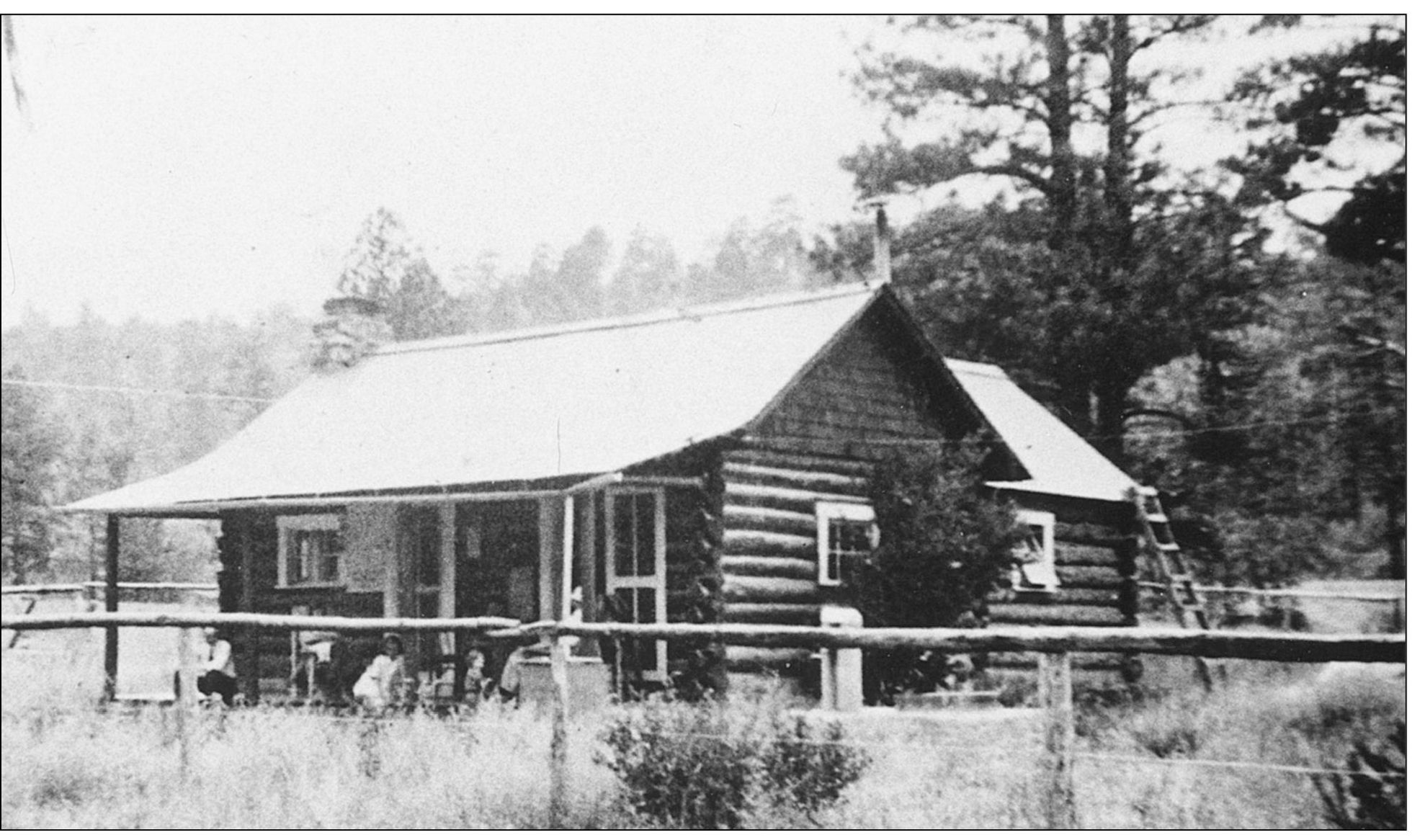Two
HULL CABIN AND BEYOND
It wasn’t an easy thing to get to the South Rim of the Grand Canyon in the late 1800s. Rugged terrain and long distance travel prevented most from making the long trek from the Flagstaff, Williams, and Ash Fork train stops, though a few brave souls did make their way to South Rim by horse and wagon. Once there, a number of Canyon residents helped make their stay a memorable one, including Grand Canyon legends John Hance, William Wallace Bass, and Ralph Cameron. William Francis Hull and other members of his family made their way west from Illinois around 1849, and they would eventually add their own contribution to the history of the Grand Canyon and Tusayan area.
It was around 1880, three years before the Atlantic and Pacific Railroad crossed northern Arizona, that the Hulls established a large tract of ranchland in an area roughly a mile south of the canyon’s South Rim. By 1884, William and his brother Phillip Jr. operated a successful sheep ranch near the area now known as Tusayan. William led the first recorded tour of Grand Canyon that same year with the help of Hance, who worked at the Hull’s sheep ranch. The two soon became partners in the budding tourism business.
By 1893, the land surrounding Hull Cabin became part of the Grand Canyon Forest Reserve. Having already lost his brother to a heart attack in 1888, William soon gave up the sheep ranch in favor of other ventures, including a mining operation, which he ran until around 1901, the same year the Grand Canyon Railroad began to bring passengers to the South Rim. The property, including Hull Tank, once used for watering sheep, soon became the property of the federal government.
Forest service ranger George Reed was one of the first rangers stationed to the cabin around 1905. In 1910, the area became part of the Tusayan National Forest. Reed stayed on at the cabin until 1919, the same year the Grand Canyon was designated a national park.

This 1907 photograph shows an overview of the Hull Cabin grounds, located within the area of Tusayan village and the Grand Canyon National Park. Shake roofs, a fence, and a barn can be seen in the image. The area was a sheep ranch in the late 1800s, operated by brothers William and Phillip Hull. (Photograph by the Kolb brothers; courtesy of the National Park Service.)

Pictured here is the old Tusayan Forest Reserve Ranger Station as it appeared in 1927. The structure, which was once located at Rowe Well, was later destroyed in 1932. The Tusayan Forest Reserve would later become known as the Tusayan Ranger District of the Kaibab National Forest. (Photograph by Ensor; courtesy of the National Park Service.)

This 1929 photograph shows Barbara Hastings McKee at the Hull Tank Ranger Station. The land around the cabin was first established by the Hull family around 1800. Forest ranger George Reed, who eventually homesteaded the land where Tusayan is today, also lived in the cabin for a number of years. (Photograph by Edwin McKee; courtesy of the National Park Service.)

A group of people can be seen through the fence in this 1919 photograph taken by the Hickey family. The group appears to be lounging at the front of the Hull Tank Ranger Station, popularly called by the simpler name of Hull Cabin. A ladder resting against the back of the building can be seen at the back of the cabin. (Courtesy of the National Park Service.)